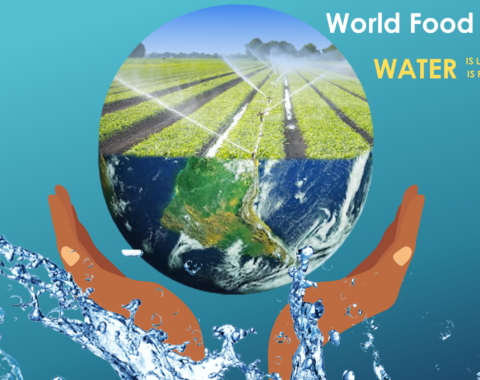
In 2010, Kate McCulley quit her job to embark on a 6-month backpacking trip to Southeast Asia. At the same time, she launched her blog Adventurous Kate in order to document her travels. That trip turned into a full-time career as a travel blogger, with Kate having now visited 74 countries and all 7 continents.
Kate has seen a lot in these past 8 years, and in her blog articles she wrestles with the complex social and environmental issues that she affronts in her travels. As such, when I saw through her social media that she was coming to visit Kenya, I knew I had to arrange for her to visit KCIC to talk about sustainability issues in the tourism industry.
Sustainability in travel is a three-pronged concept, encapsulating the environmental, social, and economic impacts that one’s travels can have on the local community. In part 1 of this series, we’ll be tackling issues of environmental sustainability in the tourism sector.
Check out Part 2 here: Talking social sustainability in the travel industry with Adventurous Kate (Part 2)
Ko Phi Phi and Boracay closed, as tourism has damaged their ecosystems
One matter we discussed with Kate was about the recent closures of two famous beaches in Asia due to environmental degradation from overtourism.
In Thailand, the island Ko Phi Phi- made famous by the Leonardo DiCaprio film The Beach– has been closed to the public indefinitely. In the Philippines, the country’s most popular island, Boracay, was shut off to tourists for a six-month period. In Ko Phi Phi, up to 80% of the surrounding coral reef had been destroyed due to litter, boats, and sunscreen; in Boracay, inspectors had discovered 800 cases of environmental violations and concluded that the amount of garbage generated per person was three times higher than in the capital city, Manila.
How does overtourism cause environmental degradation?
While many news outlets are quick to call attention to the role of irresponsible tourists in perpetuating this degradation, Kate pointed out to us that it is also the hotels and governments that contribute to overdevelopment.
“I think ultimately it is greed that causes the unsustainable development of these tourist destinations,” Kate noted. “People who are greedy going on their holidays, governments that want the kickbacks, and hotels that want to make as much money as humanly possible.”
Furthermore, developing countries sometimes do not have the adequate infrastructure to deal with massive, daily arrivals of tourists.
“One thing I noticed in both Ko Phi Phi and Boracay was that the sewage systems were not up to par,” Kate pointed out. “Every now and then you’d get a strong whiff, and you think, ‘This should not be happening in a place this beautiful.’ That’s why they say, ‘Ko Phi Phi smells like Ko Poo Poo.’”
Despite the strain on ecosystems that mass tourism produces, many countries see the economic benefit they get from it as outweighing the cost of the environmental destruction. It is thus quite astounding that the Thai and Philippine governments would choose to close these places off to tourists.
“I was shocked that they were closing Boracay down for 6 months,” Kate said, “because that is the cash cow of the Philippines. That is the single most popular tourist destination there.”
Kate also pointed out the importance of learning from why these beaches had to close in the first place and going forward with a new, more sustainable strategy.
“They’re going to be reopening soon, but I honestly have no idea what they are going to do prevent this from happening again. How do you stop that? What have they actually done?”
Sustainability movements in the travel industry
In contrast to massive, luxury hotels, one increasingly popular form of accommodation is “eco-lodges.” Such hotels strive to incorporate environmentally friendly practices so as to have as minimal impact on the local ecosystem as possible.
“I think there is a big demand for that. I think a few years from now, the eco-lodges and environmentally sustainable places are going to be some of the coolest, most in-demand, most ‘valuable on Instagram’ type of places,” Kate remarked.
Kate also pointed out other changes that are happening at an institutional level. For instance, the global Adventure Travel Trade Association has now incorporated sustainability as one of its key values. In fact, to apply for membership, you must prove that you have experience in adventure and/or sustainable travel.
Finally, there are choices that individuals can make whilst travelling in order to minimize their carbon footprint. One way is through carbon offset programs. For instance, Trees For All calculates how much CO2 you emit through taking a flight and then plants an appropriate amount of trees to absorb those emissions. Travelers can also choose overland travel instead of over flights if possible, as well as take the public transportation in their destination.
Traveling is an extremely valuable, eye-opening experience that can introduce people to new cultures and beautiful scenery. However, unchecked tourism ultimately damages the beauty of the destinations, making it an unsustainable practice. As a result, it is important that sustainability is incorporated into the industry at all levels- in the government, in the private sector, and for individuals. This will ensure that tourism can continue to thrive whilst still mitigating climate change and protecting fragile ecosystems.
By: Alise Brillault












